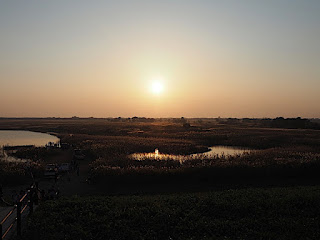In the past few months I have struggled with some of my personal relationships. However, these experiences reminded me of what I want to do in my life.
This fall, I went to Japan to participate in environmental festivals, visited a friend in Taiwan, and then I returned to New York City. Some problems emerged at the environmental festivals. When I thought about the causes of these problems, it became more clear who my important colleagues were. It also helped to clarify the meaning of the environmental festival. It was a time for me to build stable and reliable relationships.
Shōzō Tanaka (December 15, 1841 – September 4, ,1913)
Tochigi is well known as Japan's birthplace of pollution "the Ashio Copper Mine Incident”. It was also conservationist Shozo Tanaka's birthplace. He worked on mining workers and victim's rights. Ichiro Koguchi is a deceased printmaker of Tochigi prefecture. He created woodblock prints titled "people who shout at the field" to tell the history of "the Ashio Copper Mine Incident”. The environmental festivals were held in Tochigi prefecture in order to highlight the connections between the origin of pollution and contemporary environmental problems.
Oyama Mayor came to the gallery wearing Yūki-tsumugi
of Oyama which is a silk Japanese traditional cloth.
OYAMA
Saturday 9/30/17 - Sunday 10/01/17
Oyama City: Cultural Center Gallery and City Hall
On September 30th, the environmental festivals started at Oyama City. That day was the anniversary of the Tokai village nuclear accident. One of the works of my solo show at Oyama Cultural Center Gallery was related to the Tokai village nuclear accident. Takeshi Akagami, who is a researcher of Shozo Tanaka, and I discussed nuclear issues at the gallery talk.
Yanaka Village site
The screenings included films such as "Be chased by the mineral poison" by Takashi Shinozaki, that was made using Oyama's printmaker Ichiro Koguchi's woodblock prints and documentary footage about a history of Yanaka village residents that were forcibly relocated to Saroma, Hokkaido by the Japanese government. Also, ”final disposal site" by Takashi Kunimoto captured the feelings of residents whose German and Japanese towns were designated as nuclear waste disposal sites.
Watarase Pond
Watarase Yusuichi (Watarase Pond), the control basin for settling Ashio mineral poison was built 100 years ago on the four prefectural borders between Tochigi, Gunma, Saitama, and Ibaraki. A report "Seeking for our Watarase Yusuichi” by Masatomi Asao considered a common vision and cooperation in our future, beyond all barriers, in order to attempt a natural recovery.
On July 3rd, 2012, in response to Watarase Settlements being registered in the Ramsar Convention, Oyama City's administration began promoting natural experiences and nature visits, by securing flood control functions, supporting and protecting wild storks, and cultivating organic rice under the brand name Fuyumizutanbo.







No comments:
Post a Comment